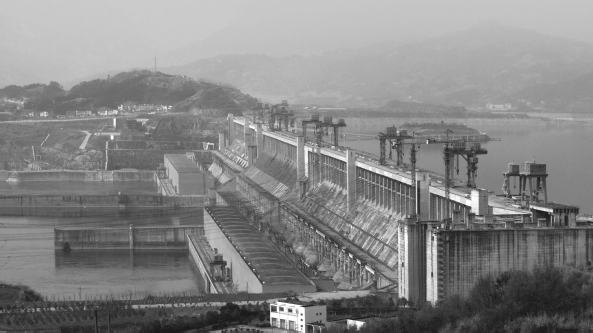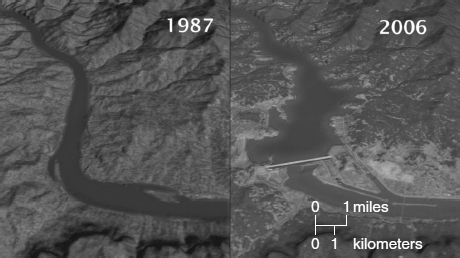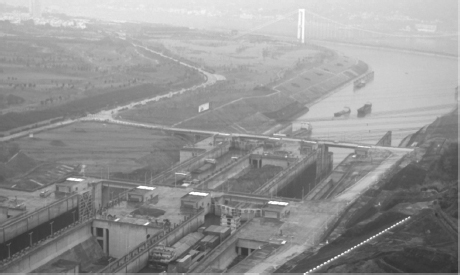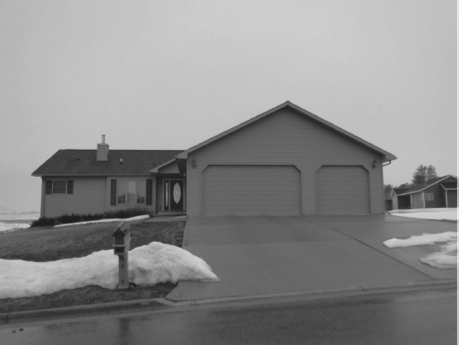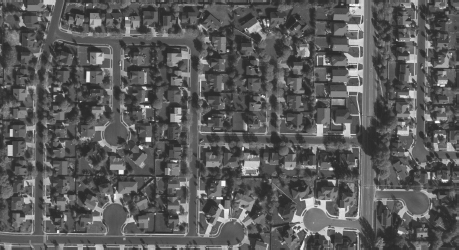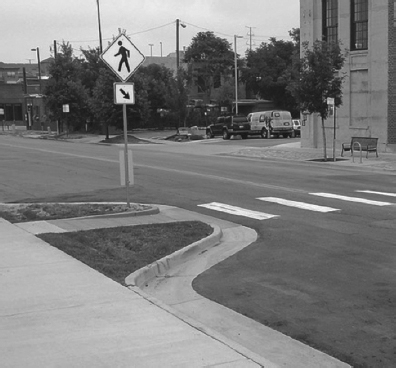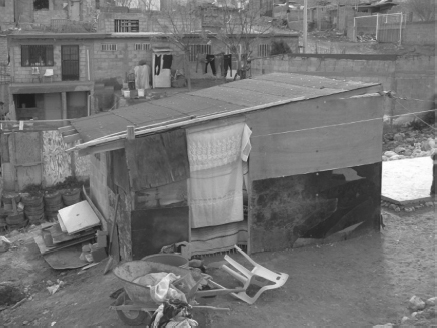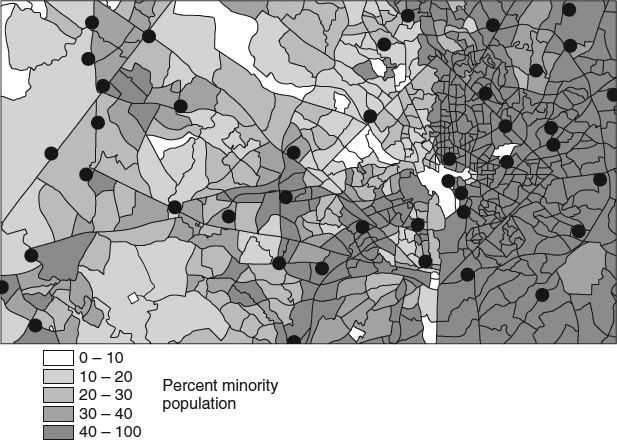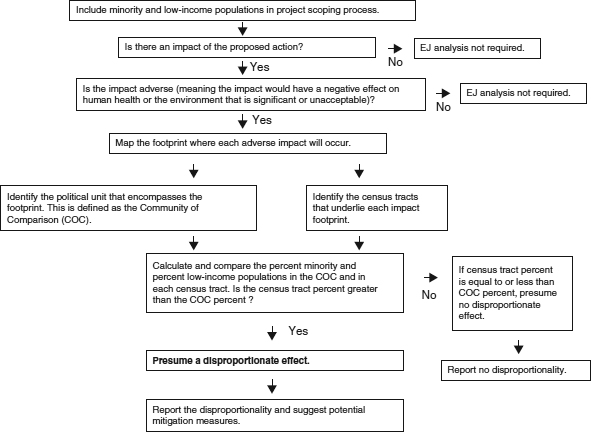Chapter Sixteen
Social Considerations
- Introduction
- Introductory Case Study: Three Gorges Dam
- Welcoming the Challenge
- Social Impact Assessment
- Displacement
- Neighborhood Cohesion
- Health
- Environmental Justice
- Outro
Learning Objectives
After reading this chapter, you should be able to:
- Explain the relationship between the infrastructure and human health.
- Describe how infrastructure projects affect neighborhood cohesion.
- Define environmental justice.
- Define social impact assessment.
- Explain the importance of considering the social impacts of infrastructure projects.
Introduction
Building, maintaining, and modifying infrastructure affects society in a number of ways, both positively and negatively. For example, in Chapter 11, Planning Considerations, we discussed the Big Dig project in Boston; one of the societal impacts was that 20,000 people were displaced as a result of the construction of the Central Artery in the 1950s. The social impacts of this displacement were many, as homes, businesses, neighborhoods, livelihoods, and ways of living were completely disrupted. On the other hand, the Central Artery project helped people by decreasing travel time (although only in its first few years of operation). The fact that the detrimental impacts were more numerous than the benefits is typical of what happens when infrastructure is planned and built without properly considering social implications.
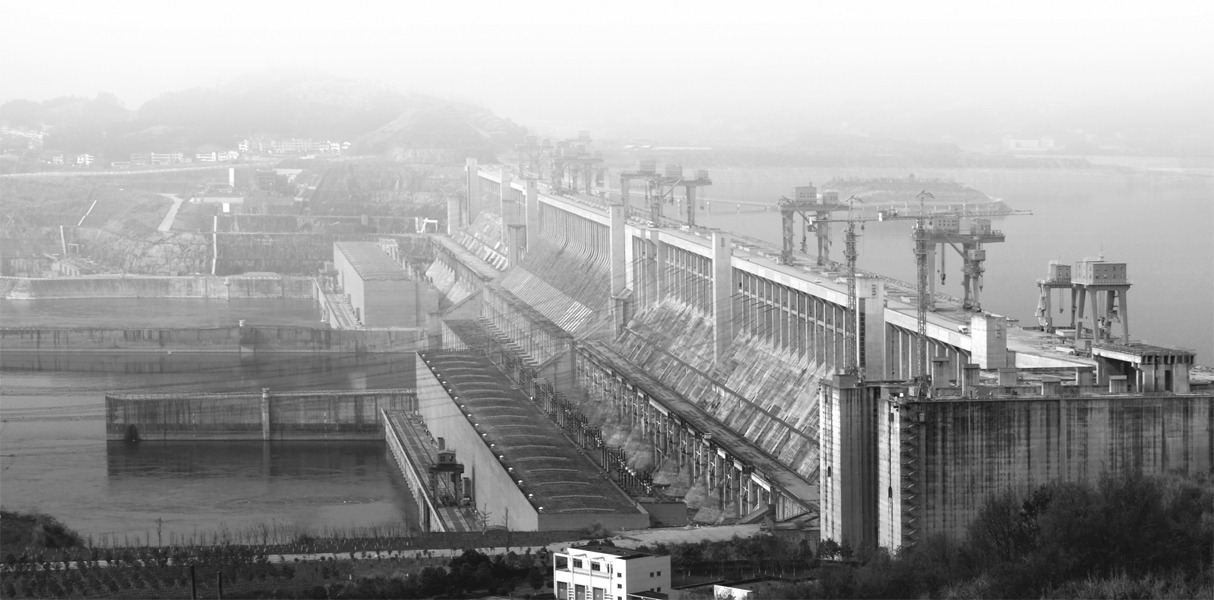
Today, the planning and design of large infrastructure projects typically include many stakeholders through public workshops, informational meetings, and advisory groups. This increased incorporation of community input over the last few decades represents a dramatic improvement to the process of planning and constructing infrastructure projects.
The term stakeholder is commonly used for those that have a stake in the outcome of the project.
Stakeholders include landowners, businesses, environmental advocacy groups, regulatory personnel, and elected officials.
Infrastructure affects society not only when a project is completed, but also during construction. As such, society may be adversely affected in many ways, including household relocation, business relocation, reduced neighborhood cohesiveness, deterioration in lifestyle, human health impacts, and reduced access to facilities and services. On the other hand, beneficial social effects may include improved access to facilities and services, including jobs, health care, and education; decreased travel times; improved public health; and associated economic benefits that “trickle down” to individual members of society. Note that some aspects of the social environment may be both positively and negatively affected simultaneously (e.g., human health).
Introductory Case Study: Three Gorges Dam
The Three Gorges Dam (Figure 16.1), recently constructed in China, is a project that is similar in scale and cost to the Big Dig project, but with greater societal impacts. This dam was constructed on the Yangtze River and is not only the largest dam ever built (approximately 1.5 miles wide and 600 feet tall), it is the largest concrete structure in the world (over 36,000,000 cubic yards of concrete). The dam was completed in 2003 at an approximate cost of $20 billion, and after several years of water accumulation behind the dam, the created reservoir flooded 250 square miles of land, as illustrated in Figure 16.2. The hydroelectric power generation, at approximately 20,000 MW (megawatts), is nearly ten times the production of the Hoover Dam and nearly 10 percent of China's electricity needs.

The primary purposes of the Three Gorges Dam are flood control and hydroelectric power generation. The dam provides more than 700 billion cubic feet of flood storage capacity, which can be released slowly from the dam to prevent downstream flooding for a 100-year event and to reduce flooding from larger than 100-year events. This represents a dramatic improvement over the 10-year event protection that existed before the dam was constructed. The Yangtze River (the third longest river in the world) is prone to flooding; a flood in 1998 killed more than 2,000 people and left millions of people homeless.
Figure 16.1 The Three Gorges Dam.
Source: Prill Mediendesign & Fotographie/iStockphoto.
 Time-Lapse Animation of the Construction of the Three Gorges Dam
Time-Lapse Animation of the Construction of the Three Gorges Dam
Figure 16.2 Reservoir Formed By the Three Gorges Dam.
Source: NASA/Goddard Space Flight Center Scientific Visualization Studio and U.S. Geological Survey.
The construction of the dam led to many other benefits. River navigation is greatly improved, as a series of locks are also part of the project (Figure 16.3). These locks allow ocean-going vessels to travel a total of 1,500 miles inland to the city of Chongqing (approximately 300 miles upstream of the dam), and thereby open the region to economic growth. Tourism and recreational opportunities have also been created. Given the scale of the project, its completion is a tremendous source of pride to this developing country.
However, many negative social impacts are associated with many dam construction projects, and are magnified on projects of the scale of the Three Gorges Dam. Over 1 million people from 13 cities, 140 towns, and 1,350 villages were displaced from the land inundated by the reservoir; this is 60 times more people than were displaced by Boston's Central Artery project of the 1950s. Additionally, thousands of archaeological and religious sites have been inundated. After completion of the dam and subsequent reservoir formation, landslides from erosion of newly saturated soils began to occur. As a result, the Chinese government has estimated that in the future, millions of additional people may have to be relocated (Yardley, 2007).
Figure 16.3 Lower Portion of the Locks of the Three Gorges Dam. Parallel locks provide separate two-way travel (left = upstream, right = downstream). Each of the five “steps” of the parallel locks (only two of which are shown in the photo) provide approximately 120 feet of elevation change.
Source: M. Penn.
The environmental impacts of dams presented in Chapter 15, Environmental Considerations, are also predicted to occur at the Three Gorges dam. An additional environmental concern for this case is the flooding of pre-existing industrial sites that were highly contaminated. Also, there is concern that wastewater receiving partial or no treatment will enter and accumulate in the reservoir (and potentially impact wildlife) rather than being flushed to sea. An estimated $8 billion is being spent to try to mitigate the water quality impacts. Extinction of several species is also a possibility.
Welcoming the Challenge
Engineers have long been stereotyped as being overly focused on technical issues. The need for engineers that are holistic thinkers has never been greater, and this need will increase in the future. However, many engineers shy away from political and social considerations because of unfamiliarity, associated uncertainties, and the difficulty in quantifying these considerations. Yet, most engineers like to solve problems and relish challenges; thus it is ironic that they would not embrace social and political issues surrounding infrastructure projects. Valero and Vesilind, in Socially Responsible Engineering, state:
“We are not naïve in thinking that all engineering students and practicing engineers will simply embrace what some may perceive to be “soft” subject matter. In fact, we believe that the approaches applied to date in raising awareness of societal issues have been woefully inadequate… In particular, they seem to treat issues like justice as sidebars where the engineer is asked to suspend engineering realities to think about social issues. This approach is unfortunate and ignores the essence of engineering since issues like ethics and social justice are even more mathematically challenging than “typical” engineering problems… Compared to many design problems, social issues frequently have more variables, exhibit initial and boundary conditions that are extremely difficult to define, require sophisticated mathematical approaches, call for creative optimization schemes, and hardly ever have a singular solution.”
They further state:
“The face of engineering is changing. We must remain highly competent in our application of mathematics and the natural sciences, but engineering is more than that. The engineer today and in coming decades must adapt to a changing world… An essential part of an engineer's social contract is that we be trusted as professionals. Such trust must be based on both sound science and the appropriate societal application of that science.”
Social Impact Assessment
Engineering projects should not be judged on their economic, political, or engineering/technical aspects alone, but also must be judged according to their environmental impacts and social impacts. As discussed in Chapter 15, Environmental Considerations, an environmental impact statement/assessment analyzes not only the potential environmental effects a project might have, but also its potential societal and economic impacts. However, the emphasis of these assessments is typically environmental. A social impact assessment (SIA) attempts to analyze the effects a project might have on society. Quantifying environmental impacts can be quite challenging, and being able to assess the relative significance of those impacts is often difficult. But SIAs can be many times more challenging to complete, given the greater difficulty in quantifying social impacts as compared to environmental impacts. Perhaps as a result of this difficulty, procedures for SIAs are not standardized as compared to EIAs, and are not commonly carried out in North America. However, we are discussing it here to help provide a framework to the discussion of social impacts, and believe that SIAs will become more common in the future.
The Interorganizational Committee on Principles and Guidelines for Social Impact Assessment (ICPGSIA, 2003) offers this definition of social impacts:
“By social impacts we mean the consequences to human populations of any public or private actions that alter the ways in which people live, work, play, relate to one another, organize to meet their needs and generally cope as members of society. The term also includes cultural impacts involving changes to the norms, values, and beliefs that guide and rationalize their cognition of themselves and their society.”
Displacement
In the process of bringing energy to industries, providing irrigation to farm fields, and widening roads around cities, land development is required. That land is often inhabited by people. Thus, an infrastructure project may require displacing people from their homes and business owners from their businesses. This displacement is completely non-voluntary on the part of the residents and businesses: they are literally forced to move from their homes.
Case in Point: Pruitt-Igoe Public Housing
The Pruitt-Igoe housing development in St. Louis, Missouri, was a modernist monument, emblematic of advances in fair housing and progress in the war on poverty. Regrettably, Pruitt-Igoe has become an icon of failure of imagination, especially imagination that accounts properly for the human condition.
Although we think of such public projects in terms of housing, they also often represent elements of environmental justice. Contemporary understanding of environmental quality is often associated with physical, chemical, and biological contaminants, but in the formative years of the environmental movement, aesthetics and other “quality of life” considerations were essential parts of environmental quality. Most environmental impact statements have addressed cultural and social factors in determining whether a federal project would have a significant effect on the environment. These factors have included historic preservation, economics, psychology (e.g., perception of open space, green areas, and crowding), aesthetics, urban renewal, and the land ethnic. In his famous essays, posthumously published as A Sand County Almanac, Aldo Leopold argued for a holistic approach: “A thing is right when it tends to preserve the integrity, stability and beauty of the biotic community. It is wrong when it tends otherwise.”
The land ethic was widely disseminated about a decade after the Pruitt-Igoe project was built, so the designers did not benefit from the insights of Leopold and his contemporaries. However, the problems that led to the premature demolition of this costly housing experiment may have been anticipated intuitively if the designers had taken the time to understand what people expected. Then we must ask who was to blame. There is plenty of culpability to go around. Some blame the inability of the modern architectural style to create livable environments for people living in poverty, largely because they “are not the nuanced and sophisticated 'readers' of architectural space that the educated architects were.” This is a telling observation and an important lesson for engineers. We need to make sure that the use and operation of whatever is designed is sufficiently understood by those living with it.
Other sources of failure have been proposed. Design incompatibility was almost inevitable for high-rise buildings and for families with children. However, most large cities have large populations of families with children living in such environments. In fact, population density was not the problem since St. Louis had successful luxury town homes not too far from Pruitt-Igoe. Another identified culprit was the generalized discrimination and segregation of the era. Actually, when originally inhabited, the Pruit section was for blacks and Igoe was for whites.
Costs always become a factor. The building contractors' bids were increased to a level where the project construction costs in St. Louis exceeded the national average by 60%. The response to the local housing authority's refusal to raise unit cost ceilings to accomodate the elevated bids was to reduce room sizes, eliminate amenities, and raise densities. As originally designed, the buildings were to become “vertical neighborhoods” with nearby playgrounds, open-air hallways, porches, laundries, and storage areas. The compromises eliminated these features; and some of the amenities removal led to dangerous situations. Elevators were undersized and stopped only every third floor and lighting in the stairwells was inadequate. So, another lesson must be to know the difference between desirable and essential design elements. Human elements essential to a vibrant community were eliminated without much accommodation.
Finally, the project was mismatched to the expectations of the people who would live there, many of whom came from single-family residences. They were moved to a very large, imposing project with 2,800 units and almost 11,000 people living there. This quadrupled the size of the next largest project at the time.

When the failure of the project became overwhelmingly clear, the only reasonable decision was to demolish it, and the spectacular implosion shown in Figure 16.4 became a lesson in failure for planners, architects, and engineers. In the designer Minoru Yamasaki's own words: “I never thought people were that destructive. As an architect, I doubt if I would think about it now. I suppose we should have quit the job. It's a job I wish I hadn't done.”
Figure 16.4 Demolition of Pruitt-Igoe Housing Development Buildings in St. Louis, Missouri. The development was completed in 1956 and began to be torn down in 1972. (From O. Newman, Creating Defensible Space, U.S. Department of Housing and Urban Development, Washington, DC, 1996.
(Source: Socially Responsible Engineering by Valero and Vesilind, 2007. Used with permission.)
Sociologists have studied the effect of dislocation on people, and have found that although some people benefit from the move, many of the dislocated people suffer from a variety of ills. Old friends and neighbors are separated. Depending on the distance of the move, a new job might need to be obtained, which was certainly the case for many associated with the Three Gorges Dam. Also, the psychological effects associated with losing land and the disruption to daily lifestyles are significant. Additionally, when displaced people move, they create new demands for housing, jobs, and other resources in the areas to which they relocate. Thus social impacts are not restricted to only those who were displaced.
Neighborhood Cohesion
Sometimes, civil and environmental engineers are called “social” engineers, because so much of their work directly affects how people interact. This can be observed in the design of parks and playgrounds or in new multi-use (residential and commercial) developments, but also in the more mundane decisions regarding the width of a sidewalk, inclusion of pedestrian-friendly crosswalks, selection of plantings and landscaping, etc.
Several aspects of modern residential land development directly affect social interactions. Consider the following examples.
- Homes are typically automobile-centered, such that a garage door is the prominent architectural feature of the portion of the home facing the road.
Figure 16.5 A Typical Modern Suburban Home. Note the contrast from traditional design in Figure 16.8.
Source: M. Penn.The garage doors have consequently supplanted the front porch as the focal point for the front of house (Figure 16.5), which leads to decreased opportunity for social interactions. Many people living in such homes will admit that they never use the front door.
- Sidewalks are at times placed on only one side of the street as a cost-saving measure.
- The prevalence of cul-de-sacs reduces connectivity.
Connectivity is the presence of easily navigated transportation networks within and between neighborhoods; Figure 16.6.
- Roads are often wider than may be necessary; the large widths allow for plenty of on-street parking and navigation by fire trucks and by snow plows in colder climates. However, the wide roads may lead to increased traffic speeds (and decreased pedestrian and bicyclist safety).
- Building lots are large enough that each family can have its own private outdoor space, which precludes the need for shared public open space.
The market for homeowners who desire more social interactions in their neighborhoods appears to be increasing. To meet this need, developers have incorporated some best practices. For example, covenants can be included to ensure that homeowners include a front porch on their homes and that all garage doors open to the side of the lot; or alleys can be added such that garages are located behind homes. Shared open space can be incorporated into the design that can greatly facilitate social interactions. Road width can be decreased, which is attractive to developers as narrower roads represent a significant cost savings as compared to the conventional wide roads. However, municipalities are often reluctant to allow narrower roads.
Covenants are restrictions that control some of the activities and the appearance of homes within a subdivision. Examples include that home color must be selected from a predetermined list, laundry cannot be dried on clotheslines, or that pets cannot be kept outside.
Figure 16.6 A Subdivision Near Salt Lake City, Utah, with Limited Pedestrian Connectivity.
Source: U.S. Geological Survey.

Headwater Streets
The headwaters of a river are the most upstream reaches of the river. Headwaters are relatively narrow given the small flowrate of water conveyed. For example, Figure 16.7 shows the headwater of the Mississippi River in Itasca State Park in Minnesota. The river can be safely waded across at this point and is only 20 feet wide. A headwater stream increases in width as the flowrate increases; for example, the Mississippi River is more than 2,000 feet wide at Dubuque, Iowa, and is nearly 3,000 feet wide in Baton Rouge, Louisiana.

Some road designers have made an analogy between headwater streams and “headwater streets.” Just as in rivers where the flowrate of water and the width are related, the analogy suggests that the width of roadways should be related to the number of vehicles that the road carries. That is, streets that convey minimal traffic should be designed to be narrower than collectors and arterials. Although the concept of headwater streets seems relatively straightforward, many existing headwater streets such as dead ends are unnecessarily wide, as the code requirements for many cities are relatively inflexible. Additionally, many of the methods by which roads can be made narrower (e.g. providing narrower travel lanes, allowing only one-way traffic, providing parking on only one side of the street, or to not provide parking at all) are not desired by many municipalities which seek extensive on-street parking and are reluctant to allow one-way operation.
Figure 16.7 Headwaters of the Mississippi River.
Source: Courtesy of Visit Bemidji.
Middleton Hills, near Madison, Wisconsin, has implemented many of these practices. The neighborhood sidewalks are quite popular with residents. Each home (e.g., Figure 16.8) is required to have a front porch, the elevation of which must be at least 2 feet above the sidewalk elevation, thus facilitating conversations between people sitting on the porch and those walking past.

Figure 16.8 Street View of Middleton Hills, Wisconsin. Note that garage doors are not visible from the street.
Source: P. Parker.
Health
One of the greatest societal impacts of basic infrastructure is the positive effect on human health. Nearly 30 years have been added to life expectancy in the United States since 1900 (see Figure 13.6 in Chapter 13). This increase can be attributed to many factors, but William Wulf, past president of the National Academy of Engineering, has proposed that much of the increase can be attributed to the work of civil and environmental engineers through the provision of wastewater treatment and drinking water treatment.
A disparity in life expectancy exists in the world today (see Figure 16.9). Low life expectancies are directly related to many factors, but the primary factors are availability of clean drinking water, proper sanitation, and availability of (and access to) medical facilities. Each of these is directly affected by the presence and quality of basic infrastructure. That is, improved infrastructure will allow for more extensive treatment of wastewater and drinking water, as well as provide for more modern health care in rural areas. Indeed, a shaded map showing the amount of money spent per capita on public infrastructure would most like look very similar to Figure 16.9.
However, the practices undertaken in building infrastructure also may have deleterious effects on public health. For example, consider the following ways in which infrastructure design and planning decisions affect public health.
- Many land-use decisions in the United States have led to urban sprawl, the unplanned, low-density method of developing residential land. This type of land use and the lifestyle it requires is very dependent on the automobile. Yet, on-road vehicles are the leading source of the following air pollutants: carbon monoxide, volatile organic compounds, and nitrogen oxides. The latter two pollutants are significant contributors to the formation of ozone (urban smog). Poor air quality is directly linked to a number of human respiratory illnesses. Therefore, it is not an exaggeration to say that infrastructure planning decisions can directly affect human respiratory health.
- Depending on how the built environment is designed, it can either promote or discourage physical activity. There are many factors that can encourage out-of-doors physical activity in urban areas: the presence and width of sidewalks, the interconnectedness of roads and sidewalks; availability of bicycle lanes; aesthetics and noise levels of outdoor places; extent of parks; real and perceived safety. The decisions surrounding these factors are often made by engineers, or made by non-engineers with significant input from engineers. A pedestrian- and bicycle-friendly infrastructure is very important, as statistics show a significant decline in out-of-doors physical activity over the past few decades and a decrease in number of children walking to school. These findings are correlated with an alarming increase in childhood obesity. Certainly, there are many reasons for these changes, and although a correlation between the amount of physical activity and the “walkability” of neighborhoods exist, engineers and other decision-makers must be cautious to infer causation. However, there is no doubt that engineers can design the built environment to encourage outdoor activity.
Figure 16.9 Global Life Expectancy.
Source: World Bank.Figure 16.10 Example of Curb Extension.
Source: Courtesy of Richard Drdul. - More than 10 percent of all traffic fatalities are pedestrians. Many factors are involved in these accidents, with the most significant being pedestrians and/or drivers with high blood alcohol content. Yet, many design decisions can help reduce automobile/pedestrian accidents. These include setting lower speed limits; implementing traffic calming devices, such as speed bumps, curb extensions (Figure 16.10), pedestrian islands, etc.; providing sidewalks and walking paths; or providing overpasses or tunnels for crossing particularly busy intersections.
Environmental Justice
Based on the previous section and on Chapter 13, Sustainability Considerations, we can conclude that the extent of infrastructure and the quality of human health are related, and that there is not an equal distribution of infrastructure across the world. Such an unequal distribution has historically occurred in the United States. In the late 19th and early 20th centuries, many municipalities in the southern states did not provide African-American neighborhoods with municipal services such as drinking water or access to centralized wastewater treatment; such services literally ended at the “border” where the minority neighborhoods began.
Similar disparities still exist today in the United States today. For example, consider the city of Modesto, California. Within the city limits are a series of “islands”—unincorporated areas that do not have access to city services, including water, sewer, and emergency services. When originally built, these areas were located outside the city limits. However, they are referred to as islands because areas surrounding these islands have been annexed into the city of Modesto. The city has refused to annex the islands because they do not have the required services, and the city will not provide the money to add those services. Unlike newly built subdivisions, the islands do not have centralized sanitary sewer collection and treatment. Other recently developed areas continue to be annexed into the city because they have the needed infrastructure in place—this infrastructure is paid for by the developer who in turn passes the cost on to the homeowners. These new areas are predominantly white and relatively affluent (able to afford new housing), while residents of the islands are more economically impoverished and predominantly Latino.

Thus, within the boundaries of a single city, the more affluent neighborhoods have city services for water and sewer while the minority islands have to rely on wells and septic tanks. Moreover, these islands have substandard (or non-existent) sidewalks, poorer quality roads, increased flooding due to a lack of storm drainage, etc. This same scenario repeats itself across the United States in cases where money is diverted to new development, and therefore diverted away from older, poorer neighborhoods. Clearly, a difference in the quality of services exists, and this was supported by a court case concerning the Modesto example; however, the court did not conclude that the difference was due to discrimination. That is, the lower quality of infrastructure in the islands was not the result of discriminatory actions by the city of Modesto.
The U.S. Environmental Protection Agency (EPA, 2010) states that “environmental justice is the fair treatment and meaningful involvement of all people regardless of race, color, national origin, or income with respect to the development, implementation, and enforcement of environmental laws, regulations, and policies. The EPA has this goal for all communities and persons across this Nation. It will be achieved when everyone enjoys the same degree of protection from environmental and health hazards and equal access to the decision-making process to have a healthy environment in which to live, learn, and work.”
The discussion on the islands of Modesto and the sidebar on colonias illustrate an important fact: poorer neighborhoods often have poorer quality infrastructure (possibly resulting in greater health risks) as compared to wealthier neighborhoods. This type of disparity has led to a relatively new field of study termed environmental justice.
Colonias
Colonias are unincorporated neighborhoods located in Texas along its border with Mexico. More than 400,000 people live in more than 2,000 colonias, the vast majority of which are Latinos with very low household incomes. These neighborhoods lack many infrastructure services, and are served by outdated septic systems, or in some cases, by no wastewater treatment process at all. Often, potable water infrastructure is not available either; in certain instances where water distribution is available, homes are not allowed to hook up to the system because the homes are so dilapidated they do not meet county building codes (Figure 16.11).

Figure 16.11 An Example of a Colonia Residence.
Source: Courtesy of A. Barud-Zubillaga.
Figure 16.12 Toxic Release Sources (Points) in Arlington County, Virginia.
Source: U.S. EPA EJView.

A variety of environmental justice studies have been performed by researchers investigating links between aviation noise and race, income level, and education level; between air quality and economic status; between the occurrence of toxic releases and race and income level; between the location of facilities for treatment, storage, and disposal of hazardous wastes (TSDFs) and minority population; etc. For example, consider Figure 16.12, which shows the relationship between toxic releases (as categorized by the EPA) in Arlington County and the density of minorities. Note how many of the toxic releases occur in areas with high minority populations.
EJView
The U.S. Environmental Protection Agency has a map utility named EJView that allows users to create maps based on the geographic areas and data sets they choose. Data sets include demographics, health information, toxic releases, etc. Figure 16.12 was created using EJView.
 EJView
EJView
Some might argue that the preceding examples are discriminatory acts, in which polluters are taking advantage of people with less political influence. Others argue that it is not a matter of discrimination, but a matter of economics; that is, less desirable land uses (e.g., industries, waste storage areas, power plants) are located in areas with lower property values because the cost of development is less. As such, this illustrates the need to consider the triple bottom line when making decisions rather than the single bottom line of economics.
As a result of a 1994 Presidential Executive Order, every federal agency (e.g., Federal Highway Administration, EPA, branches of the military) has made environmental justice part of its mission by identifying and addressing the effects of all programs, policies, and activities on “minority populations and low-income populations.” Moreover, environmental justice analyses are now common for large infrastructure projects, and often consider social factors (e.g., property buyouts, noise, traffic) as well. These analyses aim to identify whether or not minority or low-income populations are disproportionately negatively affected by a proposed project. In some cases, additional populations are considered, such as the physically handicapped, those primarily using public transportation, etc. If impacts are identified, these populations are provided opportunities to participate in decision-making to feasibly mitigate the problem. An environmental justice decision flowchart is presented in Figure 16.13 to demonstrate the process of determining adverse impact.
 Environmental Justice
Environmental Justice
Transportation Case Studies
Figure 16.13 Environmental Justice Flowchart.
Source: Adapted from the Air Force, 1997.
Outro
The following chapter (Chapter 17, Ethical Considerations) considers the relationship of ethics to engineering. We also contend that considering social impacts is an ethical consideration. For example, the assessments described in this chapter (i.e., environmental justice assessment, social impact assessment) are often seen as “additional” steps to be taken in building and managing the infrastructure. To some people, perhaps those of the unaffected majority, these steps may seem like a “waste of time,” especially in cases when extensive analysis shows no disproportionate impact. But these analyses are indeed critical to ensuring that social needs are addressed, and that adverse project impacts and the provision of new infrastructure services are distributed equitably. Although these analyses may be required by law, we believe they should be performed voluntarily in light of professional ethics. Moreover, ensuring equity adds to the public trust of the engineering profession.
chapter Sixteen Homework Problems
- 16.1 Define environmental justice.
- 16.2 Compare and contrast social impact assessment to environmental impact assessment.
- 16.3 How does infrastructure positively affect public health? What are some potential negative public health impacts?
- 16.4 Do you think that environmental justice assessments should be done prior to building any infrastructure project? Explain.
- 16.5 Illegal aliens from Mexico are subjected to high doses of pesticides working in farm fields. Is this an example of environmental injustice? Why or why not?
- 16.6 Residents living under flight paths from airports are exposed to significant noise pollution. Often, these flight paths pass over minority communities at a higher frequency than they do over non-minority communities. What might be some reasons for this difference?
- 16.7 Read the paper entitled ”Environmental Injustice: Case Studies from the South,” available at www.wiley.com/college/penn. Write a one-page reflection on this paper.
- 16.8 For one of the traffic calming methods listed (as chosen by your instructor), explain how it works; list its benefits; list its drawbacks. Cite all information sources.
- bump-outs
- traffic circle
- speed bumps
- raised crosswalks
- neckdowns
- center islands
- chicanes
- 16.9 Read one of the case studies of your (or your instructor's) choice from the FHWA's Environmental Justice website (also available at www.wiley.com/college/penn) and write a one-page reflection.
- 16.10 Write a one-page paper summarizing the infrastructure (or lack thereof) in the Colonias.
Key Terms
- connectivity
- covenants
- displacement
- environmental justice
- neighborhood cohesion
- social impact assessment
- stakeholders
References
Department of Air Force. 1997. Guide for Environmental Justice Analysis with the Environmental Impact Analysis Process. http://www.afcee.af.mil/shared/media/document/AFD-070830-060.pdf, accessed August 29, 2011.
Environmental Protection Agency. 2010. Environmental Justice: Compliance and Enforcement. http://www.epa.gov/environmental justice/, accessed August 29, 2011.
Interorganizational Committee on Principles and Guidelines for Social Impact Assessment (ICPGSIA). 2003. “Principles and Guidelines for Social Impact Assessment in the USA.” Impact Assessment and Project Appraisal, 21(3): 231–250.
Valero, D. A. and P. A. Vesilind. 2007. Socially Responsible Engineering: Justice in Risk Management. Hoboken, NJ: John Wiley & Sons.
World Bank. Indicators, Life Expectancy at Birth, Total (Years). http://data.worldbank.org/indicator/SP.DYN.LE00.IN/countries?display=map, accessed August 29,2011.
Yardley, J. 2007. “Chinese Dam Projects Criticized for Their Human Costs.” The New York Times. http://www.nytimes.com/2007/11/19/world/asia/19dam.html?pagewanted=1&_r=2, accessed August 29, 2011.

